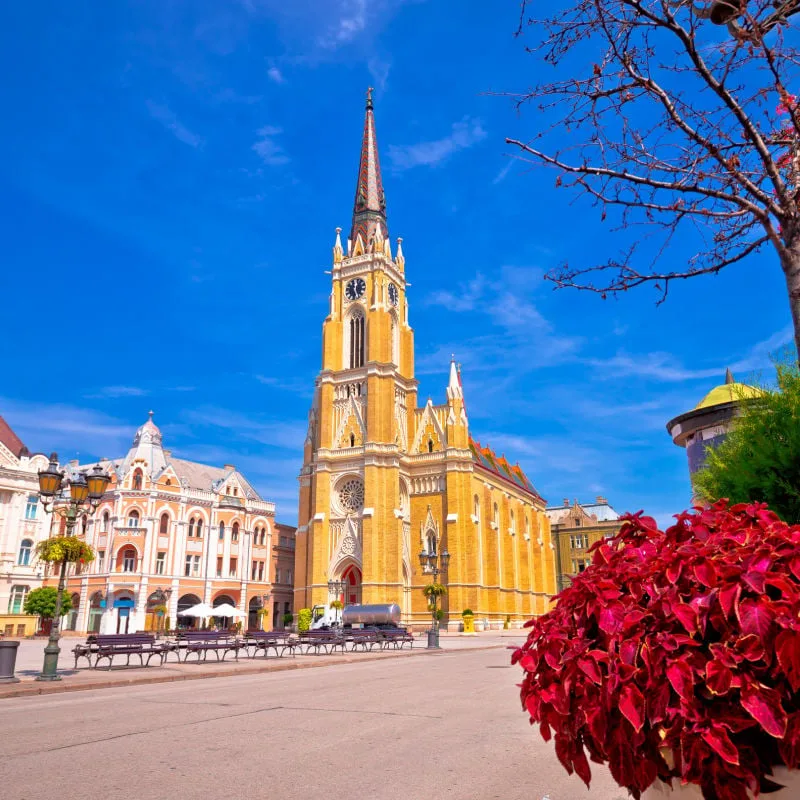If you’ve been planning a Eurotrip this summer but you’re suddenly taken aback by how expensive hotels are—not to mention the crowds that have already started forming—you may be wondering whether there are cheaper alternatives to the popular France-Italy-Spain trio.
We’re glad to report you don’t necessarily need to break the bank to soak up Europe’s ancient culture, and if the latest travel trends are anything to go by, you’re not alone in your search for a budget-friendly summer getaway across the pond.
According to the new quarterly report released by the European Travel Commission (ETC), four of Europe’s cheapest destinations are in fact among the fastest-growing in the continent:
Portugal

Having witnessed a 17% growth in arrivals compared to the pre-crisis era, Portugal is undergoing a Tourism Renaissance lately, being widely promoted as the cheapest country to visit in Western Europe currently and a world-class sunny destination with mild temperatures year-round.
Lisbon is the absolute leader in bookings, hosting 6.5 million guests in 2023 alone, all drawn to the capital’s rich medieval heritage and unrivaled food scene, but the wider country, with its rolling vineyards, sun-drenched Atlantic Coast, and remote islands, is equally enticing.

Other Portuguese destinations that have been on tourists’ radar include Porto, up north, a charming riverside Baroque city famous for its fortified wine, the Algarve, where sandy beaches bounded by azure waters extend for miles on end, and Madeira, a tropical archipelago where nature reigns supreme.
On average, a one-week trip to Lisbon costs $982 per person, including accommodation, transportation and food, though it is essentially halved to only $440 for budget travelers, thanks to your local pastelaria‘s $8 lunch menu and overnights in youth hostels costing $15.
Türkiye

The leading destination in the Eastern Mediterranean, Türkiye posts a 35% growth compared to 2019, with a historic increase in searches for beach destinations like Antalya and Bodrum, and new nonstop flights launching from the U.S. to Istanbul.
Considering it’s a cultural behemoth, with a History spanning two millennia and fascinating, minaret-dotted cities that feel more like open-air museums, not to mention the balmy summer weather and gorgeous coastline of the Southern provinces, we can’t say we’re surprised.

Home to 2,000-year-old Greco-Roman ruins, a fast-developing resort zone, and officially a gateway to the Turkish Riviera, Antalya in particular is gearing up for a record-breaking year, with over 16 million travelers expected until December.
Out of all the major Mediterranean destinations, Türkiye is probably the least expensive, too: tourists are helped by the severe devaluation of the Turkish lira and low consumer prices across the board; in Antalya, for instance, a one-week stay will set budget travelers back by $409.

Besides the tourist offer and affordability, Türkiye’s success this year is partly attributed to its relaxed entry regulations: Americans are no longer required to apply for visas when visiting, provided their length of stay does not extend beyond 90 days out of any 180-day period.
Bulgaria
Formerly one of Southeastern Europe’s most obscure ‘commie’ states, Bulgaria has resurfaced in recent years as an open, progressive country that is not only incredibly welcoming to tourists but also perfectly safe to visit.

Its full-swing Westward, association with the EU and NATO, and low levels of crime make it seriously appealing to risk-averse travelers, and while the 39% rise in tourism has not been attributed to one factor, we’ll go out on a limb here and assume it’s largely thanks to the trendy Black Sea Coast.
Dubbed the New Mediterranean, the Black Sea is anything but black, and it’s just as warm and lovely as the former, or so the crowds of British and German tourists who have started to flock to the aptly-called Sunny Beach seem to think so.

Coastal views aside, Bulgaria is just as sought-after for its cultural value: Sofia, its capital, is dominated by the golden-domed Alexander Nevsky Cathedral, while Plovdiv, with its cobbled streets and ancient theater, has been continuously inhabited for thousands of years.
Visiting Bulgaria this summer, you should plan on spending $483 overall for a week: the beachfront, three-star Complex Astra in Sunny Beach costs $35 per night to book, and planning on spending around $34-40 per day on food is perfectly reasonable.
Serbia

Now, this may come as a shock to some, but it’s not newly-discovered Albania, nor up-and-coming sunny Montenegro that’s seen the biggest rise in tourism (47%) in the last four years: it’s landlocked Serbia, a Slavic nation in the heart of the Balkan Peninsula.
Serbia is best represented by Belgrade, its capital city sitting at the confluence of the Danube and Sava rivers that just oozes Old World charm, with pedestrianized streets, ornate façades, winding tramways, monumental Orthodox churches, and even a historic castle to call its own.

A surviving jewel of the bygone Austrian-Hungarian Empire, the elegant Novi Sad, just north of Belgrade, is not to be skipped either, with its yellow-washed Neo-Gothic cathedral, café-dotted Old Town, and imposing Danube-side fortress.
Serbia is the only non-coastal destination on this list, but that doesn’t mean nature isn’t abundant: Zlatibor is a verdant reserve full of tourist-friendly hikes and lakes.
As Serbia isn’t in the European Union, nor the Eurozone, for that matter, it’s significantly cheaper to visit than other Central and Eastern European countries, with estimated costs for a one-week stay if you’re not a big spender totaling a very reasonable $314.

Lucky for Americans looking for an offbeat, not-so-obvious destination this summer, they can fly nonstop to Serbia, as it is the only Balkan capital (excluding Athens), to accommodate larger aircraft arriving from overseas.
Credit: Source link

